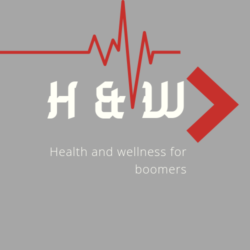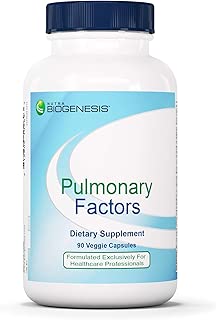 We will be looking at lung disease that affects the blood vessels. The right side of the heart receives low-oxygen blood from the veins. It pumps blood into the lungs through the pulmonary arteries. These blood vessels can suffer from disease as well.
We will be looking at lung disease that affects the blood vessels. The right side of the heart receives low-oxygen blood from the veins. It pumps blood into the lungs through the pulmonary arteries. These blood vessels can suffer from disease as well.
-
Pulmonary embolism
-
Pulmonary hypertension
Pulmonary embolism, otherwise called deep vein thrombosis, is a blockage in one of the pulmonary arteries in the lungs
in most cases, this blockage is caused by blood clots that travel to the lungs from the legs or other body parts.
These clots block the flow to the lungs, this disease can be life-threatening, but with prompt treatment, the risk of death is significantly reduced. But taking measures to prevent blood clots in our lives will help reduce the risk of pulmonary embolism.
The symptoms of Pulmonary embolism can vary greatly, depending on how much of your lung is involved, the size of the clots, and whether you have underlying lung or heart disease.
Some of the common signs that are associated with pulmonary embolism are
- Shortness of breath. This symptom typically appears suddenly and always gets worse with exertion.
- Chest pain. You may feel like you have a
heart attack. The pain may worsen when you breathe deeply, cough, eat, bend or stoop. The pain will worsen with
exertion but won’t go away when you rest. - Cough. The cough may produce bloody or blood-streaked sputum.
Some other signs that can accompany this disease are
- Leg pain or swelling, or both, usually in the calf
- Clammy or discolored skin (cyanosis)
- Fever
- Excessive sweating
- Rapid or irregular heartbeat
- Lightheadedness or dizziness
THE CAUSES
Pulmonary embolism occurs when a clump of
material, most often a blood clot, gets wedged into an artery in your
lungs. These blood clots most commonly come from the deep veins of your
legs. This condition is known as deep vein thrombosis (DVT).
In most cases, multiple chunks are involved but not necessarily all at
once. The portions of lung served by each blocked artery are robbed of
blood and may die. This is known as pulmonary infarction. This makes it
more problematic for your lungs to provide oxygen to the rest of your
body.
Occasionally, blockages in the blood vessels are caused by substances other than blood clots, such as:
- Fat from the marrow of a broken long bone
- Collagen or other tissue
- Part of a tumor
- Air bubbles
Blood clot in a leg vein
Although anyone can develop blood clots and subsequent pulmonary embolism, certain factors can increase your risk.
Medical history
We are at a higher risk if our family members or we have had
venous blood clots or pulmonary embolism. This may be due to
inherited disorders that affect the blood, making it more prone to clot.
In addition, some medical conditions and treatments put us at risk, such as:
- Heart disease. Cardiovascular disease, specifically heart failure, makes clot formation more likely.
- Cancer. Certain cancers — especially
pancreatic, ovarian, and lung cancers, and many cancers with metastasis —
can increase substances that help blood clot, and
chemotherapy further increases the risk. Women with a personal or family
history of breast cancer taking tamoxifen or raloxifene are also at higher risk of blood clots. - Surgery. Surgery is one of the leading causes
of problem blood clots. For this reason, medication to prevent clots may
be given before and after major surgery, such as joint replacement.
Prolonged immobility
Blood clots are more likely to form during periods of inactivity, such as:
- Bed rest. Being confined to bed for an extended
period after surgery, a heart attack, leg fracture, trauma, or
severe illness makes you more vulnerable to blood clots. When the lower
extremities are horizontal for long periods, venous blood flow
slows, and blood can pool in the legs. - Long trips. Sitting in a cramped position
during a lengthy plane or car trip slows blood flow in the legs, which
contributes to the formation of clots.
Other risk factors
- Smoking. For reasons that aren’t
well-understood, tobacco use predisposes some people to blood clot
formation, especially when combined with other risk factors. - Being overweight. Excess weight increases the risk of blood clots — particularly in women who smoke or have high blood pressure.
- Supplemental estrogen. The estrogen in birth
control pills and hormone replacement therapy can increase clotting
factors in your blood, especially if you smoke or are overweight. - Pregnancy. The weight of the baby pressing on
veins in the pelvis can slow blood return from the legs. Clots are more
likely to form when blood slows or pools.
Complications
Pulmonary embolism can be
life-threatening. About one-third of people with undiagnosed and
untreated pulmonary embolism don’t survive. However, when the condition is
diagnosed and treated promptly, that number drops dramatically.
Pulmonary embolism can also lead to pulmonary hypertension, a
condition in which the blood pressure in your lungs and the right
side of the heart is too high. When obstructions in the
arteries inside your lungs, your heart must work harder to push blood
through those vessels. This increases the blood pressure within these
vessels and the right side of the heart, which can weaken your heart.
In rare cases, small emboli occur frequently and develop over time,
resulting in chronic pulmonary hypertension, also known as chronic
thromboembolic pulmonary hypertension.
Prevention
Preventing clots in the deep veins in our legs (deep vein thrombosis) will help prevent pulmonary embolism.
For this reason, most hospitals are aggressive about taking measures to
prevent blood clots, including:
-
Blood thinners (anticoagulants). These
medications are often given to people at risk of clots before and after
an operation and to people admitted to the hospital with a
heart attack, stroke, or complications of cancer. -
Compression stockings. Compression stockings
steadily squeeze your legs, helping your veins and leg muscles move
blood more efficiently. They offer a safe, simple, inexpensive way to
keep blood from stagnating during and after general surgery. -
Leg elevation.
Elevating your legs when possible and at night can also be very effective. Raise the bottom of your bed 4 to 6 inches with blocks or books.
- Physical activity. Moving as soon as possible
after surgery can help prevent pulmonary embolism and hasten recovery
overall. This is one of the main reasons your nurse may push you to get
up, even on your day of surgery, and walk despite the pain at the site of
your surgical incision. - Pneumatic compression. This treatment uses
thigh-high or calf-high cuffs that automatically inflate with air and
deflate every few minutes to massage and squeeze the veins in your legs
and improve blood flow.
Prevention while traveling
The risk of blood clots developing while traveling is low but
increases as travel increases. If you have blood clots risk factors and are concerned about traveling, talk with your doctor.
Your doctor might suggest the following to help prevent blood clots during travel:
- Drink plenty of fluids. Water is the best
liquid for preventing dehydration, which can contribute to the
development of blood clots. Avoid alcohol, which contributes to fluid
loss. - Take a break from sitting. Move around the
airplane cabin once an hour or so. If you’re driving, stop every hour
and walk around the car several times. Do a few deep knee bends. - Fidget in your seat. Flex your ankles every 15 to 30 minutes.
- Wear support stockings. Your doctor may
recommend these to help promote circulation and fluid movement in your
legs. Compression stockings are available in a range of stylish colors
and textures. There are even devices called stocking butlers to help
you put on the stockings.
Thank you for reading my post hope it helped you in some way; I will reply to all comments and questions left in the space provided at the bottom of this post, and please remember to like and share.
“You must not rely on the information on our website as an alternative to medical advice from your doctor or another professional healthcare provider.”
NOTE: This post includes affiliate links, which, if clicked on and a product purchased, I get a small commission (with no increase in cost to you).




